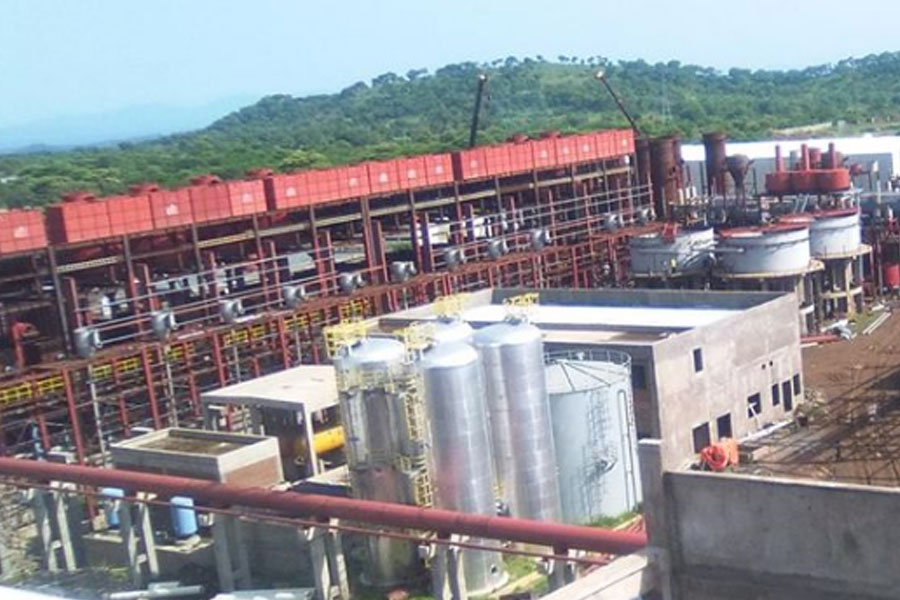
Radar | Jan 09,2021
It is unlikely that the bald and polished scalp bobbing on the neck of a businessman, past his middle-age, will ever sprout follicles to bud any hair.
But this biological detail is of little concern to a tall Indian peddler in a stained sari that dangles brass bracelets in one hand and little prescription-sized vials filled with dubious looking potions in the other.
“This will cure baldness and restore full hair to the head,” she says in faulty but serviceable Amharic.
She points to a collection of cheap scent bottles that she holds and addresses the man who is sitting with a friend in an open café in Saris, the southern part of Addis Abeba.
She dangles her wares and smiles, the scent of congealed fragrant talcum accompanying her every move. She walks out of the sun and gets closer to the men, eying them timidly, as she recounts the virtues of her merchandise.
Investments and loans do not show the full picture of China's presence in Ethiopia. It is best exemplified by cheap Chinese trinkets that make their way into the nation's informal sector.
“They must be worse off than us to come here as peddlers and compete with them,” says the man indicating with his gaze to a local boy who is walking around each table with leather belts wrapped around his neck; and keychains, tassels, necklaces, ear picks and other trinkets hanging from his arms.
The boy is one of the hundreds of thousands of foot soldiers unleashed by the Chinese production machine that sell its cheap merchandise across Ethiopia, and indeed Africa. China pays no salaries, benefits or provides any incentive to this veritable army of self-recruited young hawkers. These are young men and women, poor, uneducated and belong to a venerable population that survives on the margins.
These young peddlers, mostly migrants to the city from the countryside, owe much of their meagre survival to the trade of mass-produced cheap goods from China. Indeed, they exist in the confines of subsistence where most of the gains of the articles they sell have already been syphoned off along a long chain that stretches from Shenzhen to Addis Abeba. This youthful mass does not include the thousands of other shopkeepers who pay good money in rent and tax, flogging the same cheap merchandise from tiny containers, shacks and storefronts around the capital.
The Chinese goods chain consists of financiers with access to hard currency and facilitators of the flow of manufactured articles into Ethiopia. The chain comprises the transporters, warehouse owners, distributors, money changers and traders who sell to dealers who in turn distribute the merchandise to a network of peddlers.
Most, if not all the trade, is done at the edge of the law, in obscurity. Goods, often identical merchandise from manufacturing hubs in southern and central China arrive by boatloads. They seem to arrive overnight from the ports and move quickly through well-established circuits. Some days a certain type of cheap umbrella will appear at every corner in the city until it is replaced by bags of similar make and type; or by shoes of indistinguishable quality and looks that pop up for just a few days.
The market chain is invisible. Most ordinary shoppers have no clue how or from where the merchandise bursts up to make its appearance on the city streets. The swift and efficient dissemination of the stocks is shrouded in mystery where, only the hauls of cardboard boxes, encapsulated and shrink-wrapped goods, wooden crates, and stuffed jute bags are visible as they are ferried around on truck beds, in minibusses, on carts and on the heads of labourers.
It is no longer necessary to go to Dubai to buy the merchandise. Now, purchase orders, invoices and payments are facilitated in back channels and sometimes online, away from the prying eyes of airport and customs officials. Distributors and traders deal directly with manufacturers in faraway places called Guangzhou and Yiwu in China, and well-oiled logistics operators from there ensure that the merchandise is shipped and delivered to Addis Abeba without a hitch.
Somewhere in the entrails of this lumbering city, someone receives and distributes these trinkets to a youthful army of peddlers. This young militia has no base and no solid assets except what they receive from the distributors that day. They toe their chattels around making short stops at busy street corners and along the pavement to hawk their inadequate wares to city dwellers who cannot afford anything better.
In the meantime, China has gained near total monopoly in the Ethiopian economy as a major lender, financier of public projects, contractor of mega infrastructure developments, major supplier of equipment and machinery, and as the procurer of nigh everything from underwear to satellite dishes. China reins in the construction of railway systems; airports; power grids; road networks; major headquarters of government institutions, banks and insurance companies; and other projects, big and small.
But it all comes at a cost. In 2016 alone, Ethiopia exported 240 million dollars in primary goods to China, while importing 3.8 billion dollars in goods and merchandise, a staggering trade imbalance by any standard.
Recently, the Ethiopian Space Science & Technology Institute tendered a bid for the supply of a satellite data receiver and China Centre for Resources Satellite Data placed the lowest bid at 140 million Br. The highest bid for the receiver was 400pc higher than the Chinese company’s offer.
When quizzed about this huge difference in price, a manager at the Italian supplier quipped, “we offered a Maserati Quattroporte, and they settled for a Toyota DX.”
The Indian peddler and her cohorts, now a fixture on our streets, follow the coattails of the Chinese inroads into Ethiopia. This seller of bracelets and curing potions catches on that the weary discussion of the men at the café is about her, and she moves on to another table. This is the golden age of the peddler in Ethiopia where proposals for mega biofuel production are pushed with equal vigour as power production schemes from collected wet refuse.
The problem is that neither is feasible or based on sound principles, and the claims made by both have no more validity than the dubious tonics that the Indian woman claims will grow hair follicles on a bald head.
PUBLISHED ON
Dec 25,2018 [ VOL
19 , NO
974]


Radar | Jan 09,2021

Fortune News | Nov 21,2018

Fortune News | Apr 06,2019

Fortune News | Sep 06,2020

Fortune News | May 15,2021

Dec 22 , 2024 . By TIZITA SHEWAFERAW
Charged with transforming colossal state-owned enterprises into modern and competitiv...

Aug 18 , 2024 . By AKSAH ITALO
Although predictable Yonas Zerihun's job in the ride-hailing service is not immune to...

Jul 28 , 2024 . By TIZITA SHEWAFERAW
Unhabitual, perhaps too many, Samuel Gebreyohannes, 38, used to occasionally enjoy a couple of beers at breakfast. However, he recently swit...

Jul 13 , 2024 . By AKSAH ITALO
Investors who rely on tractors, trucks, and field vehicles for commuting, transporting commodities, and f...

Oct 11 , 2025
Ladislas Farago, a roving Associated Press (AP) correspondent, arrived in Ethiopia in...

Oct 4 , 2025
Eyob Tekalegn (PhD) had been in the Governor's chair for only weeks when, on Septembe...

Sep 27 , 2025
Four years into an experiment with “shock therapy” in education, the national moo...

Sep 20 , 2025
Getachew Reda's return to the national stage was always going to stir attention. Once...